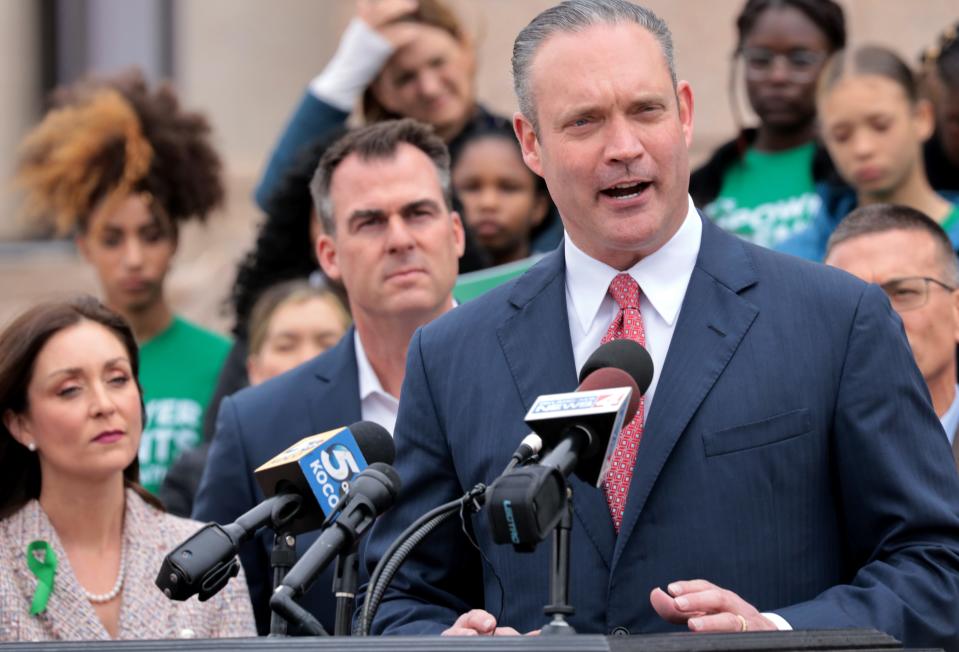Guest: 'We get what we pay for.' School voucher plans benefit select few at expense of all others
I’m a sucker for a cliche analogy but must confess that I’ve had a hard time choosing just the right one to explain the new Oklahoma state schools superintendent and his wish list of policies for students and schools. If I’m a public school administrator, I would consider this a “perfect storm,” or in data science there’s the adage of “garbage in, garbage out.”
I’ve settled on, “you get what you pay for.”
Ryan Walters ran a campaign based mostly on click-bait rhetoric from the front seat of his car that had nothing to do with what is actually happening in schools. Amid the muck, he pushed for a voucher system that would take money from the public school system and from under-paid and over-worked teachers. It’s not surprising, then, that his first budget pushed vouchers and halved the amount set aside for the first pay increase for teachers since the walkout. Right now, it looks like state legislators are only willing to pass his voucher system, but in both cases, Oklahomans should expect to get what we pay for.
School vouchers have been a controversial topic for decades. Proponents argue that vouchers provide families with a choice in education and help to level the playing field for underprivileged children. However, and especially when it comes to rural school systems, vouchers can cause more harm than good.
One major issue with vouchers is that there are often a limited number of private or charter schools available nearby. This can result in families having to travel long distances or pay for transportation to access the "choice" that vouchers provide. The cost of transportation, coupled with the cost of tuition, can make private or charter schools unaffordable for many families and yields benefits to only those that can pay. Those that can’t pay are left with a public school that is in a worse financial position than before because of syphoned resources.
The economics behind this is the concept of economies of scale. Let’s suppose there are 100 kids that would normally attend a single elementary school. Let’s now also assume that some portion of these students leave the public school for a private or charter school. With school vouchers, the outcome is that the money that was once allocated to this school has effectively been split into three. That’s now three different cafeterias, three different playgrounds, three different sets of first- through fifth-grade teachers that you need to support with the same budget. You’ve tripled the cost without changing how many students are served.
Or put differently, by adding a voucher system, you’ve tripled the per-pupil cost of teaching a single student that remains in the public school. By operating a single school, you can service more students with one expense. In business we call this spreading out your overhead. Vouchers exacerbate existing problems and already-too-low funding by redirecting crucial dollars away from public schools and toward private schools.
There are a few alternatives to Walters’ proposal that come from the Republican side of the legislative body.
Adam Pugh’s plan is creative and might just work. His plan includes an across-the-board pay raise in addition to new proposals like paid maternity leave and devoted funds to pay for college if the teacher remains in the state. The other plans are competing Senate and House voucher proposals.

The version from House Speaker Charles McCall sends $5,000 per student to parents if their child attends private school. The speaker insists that this isn’t a voucher, but a port-a-potty by any other name still smells the same.
This plan would leave 43 counties with no benefit. In fact, only 10 out of 77 counties have more than 200 private students in their boundaries, and 78.5% of all private students in the state are in Tulsa or Oklahoma counties.
So, his plan would simply be a handout to parents that are already well-off enough to pay for private schools in Oklahoma or Tulsa counties. That’s $53 million to Oklahoma County and nearly $62 million to Tulsa County that could otherwise be spent on improving outcomes for students across the state.
The Senate version sweetens this handout to $7,500 per student, taking the total bill to nearly $200 million for Oklahoma and Tulsa counties only.

So, now that the legislative session is in full gear and a voucher bill is passed out of both chambers, it’s important to remember that we get what we pay for in education. These proposals only pay for a select few students at the expense of all others. Or to pick one last (slightly modified) cliche from my students, we can “mess around and find out” how this will affect public education in Oklahoma.

Travis Roach, Ph.D., is associate professor and chair of the Department of Economics and director of the Central Policy Institute at the University of Central Oklahoma.
This article originally appeared on Oklahoman: Guest: School voucher plans pay for select few at expense of others

